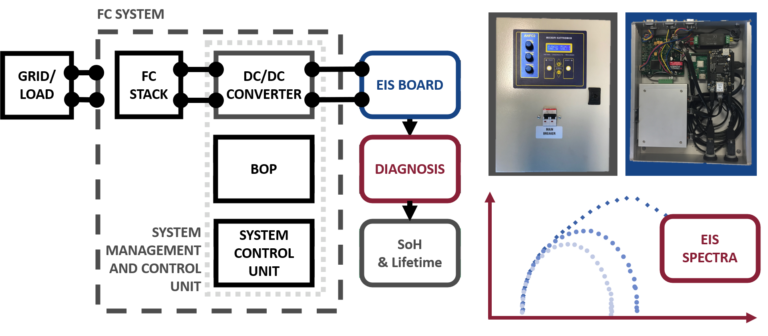Improve FCS performance and durability by implementing an advanced and algorithm that combines monitoring, diagnosis, prognosis, control and mitigation actions for both SOFC and PEMFC systems.
Design and engineer the hardware required for MDPC algorithms application, with attention to sensors reduction issues and the specific constraints imposed by stack technologies and systems applications towards industrial scalability.
Perform dedicated experimental campaigns for stacks and system characterization and MDPC tool prototype validation embedded on FCSs running in operational environment
Develop an advanced FCS management strategy (supervisory level), with functionalities integrated with remote monitoring, for future smart-grid interaction and predictive maintenance application.







